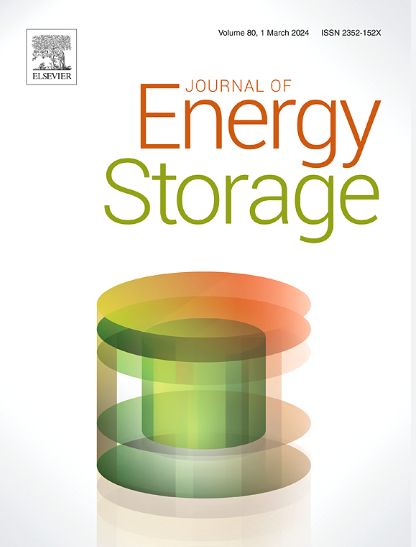Recent developments in renewable energy assisted cold thermal energy storage air conditioning systems
IF 8.9
2区 工程技术
Q1 ENERGY & FUELS
引用次数: 0
Abstract
The accelerating global fears about climate change and the imperative to reduce energy consumption have spurred a growing interest in sustainable and energy-efficient cooling solutions. Traditional air conditioning systems, reliant on fossil fuels and grid electricity, put a significant burden on energy resources and add to greenhouse gas emissions. To address these challenges, there has been an increase in research and development activities in recent years that are centered on the integration of renewable energy sources with advanced Cold Thermal Energy Storage (CTES) technologies into air conditioning systems. This review article comprehensively explores the latest advancements in renewable energy-assisted CTES air conditioning systems. It begins by elucidating the principles and significance of CTES, discussing its various forms, including phase change materials (PCMs), ice storage, and advanced materials. The integration of PCMs, particularly advanced nano-enhanced or composite PCMs, has been shown to improve thermal storage capacity by approximately 20–30 %, although their long-term stability and environmental impacts require further investigation. Subsequently, the article explores combining geothermal, wind, and solar energy with other sustainable sources into air conditioning systems, emphasizing the potential benefits of reduced greenhouse gas emissions and enhanced energy resilience. For instance, employing solar, wind, and geothermal resources can reduce greenhouse gas emissions by over 75 % compared to conventional systems. It also explores techno-economic analysis, integration challenges, environmental impact, and sustainability assessment. The challenges, such as renewable energy intermittency, resulting in performance variations of about 10–15 %, necessitate the development of intelligent control algorithms and adaptive system architectures. Additionally, the potential research directions, technological innovations, and policy implications have also been discussed in detail.
可再生能源辅助冷热蓄能空调系统的最新进展
全球对气候变化的担忧日益加剧,减少能源消耗的必要性促使人们对可持续和节能的冷却解决方案越来越感兴趣。传统的空调系统依赖化石燃料和电网供电,对能源资源造成了沉重负担,并增加了温室气体排放。为了应对这些挑战,近年来研究和开发活动的增加集中在将可再生能源与先进的冷热能储存(CTES)技术集成到空调系统中。本文综述了可再生能源辅助CTES空调系统的最新进展。首先阐述了CTES的原理和意义,讨论了CTES的各种形式,包括相变材料(PCMs)、冰蓄冷和先进材料。pcm的集成,特别是先进的纳米增强或复合pcm,已被证明可以提高约20 - 30%的储热能力,尽管它们的长期稳定性和环境影响需要进一步研究。随后,本文探讨了将地热、风能和太阳能与其他可持续能源结合到空调系统中,强调了减少温室气体排放和增强能源弹性的潜在好处。例如,与传统系统相比,利用太阳能、风能和地热资源可以减少75%以上的温室气体排放。它还探讨了技术经济分析、一体化挑战、环境影响和可持续性评估。可再生能源的间歇性等挑战会导致约10 - 15%的性能变化,因此需要开发智能控制算法和自适应系统架构。此外,还详细讨论了潜在的研究方向、技术创新和政策影响。
本文章由计算机程序翻译,如有差异,请以英文原文为准。
求助全文
约1分钟内获得全文
求助全文
来源期刊

Journal of energy storage
Energy-Renewable Energy, Sustainability and the Environment
CiteScore
11.80
自引率
24.50%
发文量
2262
审稿时长
69 days
期刊介绍:
Journal of energy storage focusses on all aspects of energy storage, in particular systems integration, electric grid integration, modelling and analysis, novel energy storage technologies, sizing and management strategies, business models for operation of storage systems and energy storage developments worldwide.
 求助内容:
求助内容: 应助结果提醒方式:
应助结果提醒方式:


